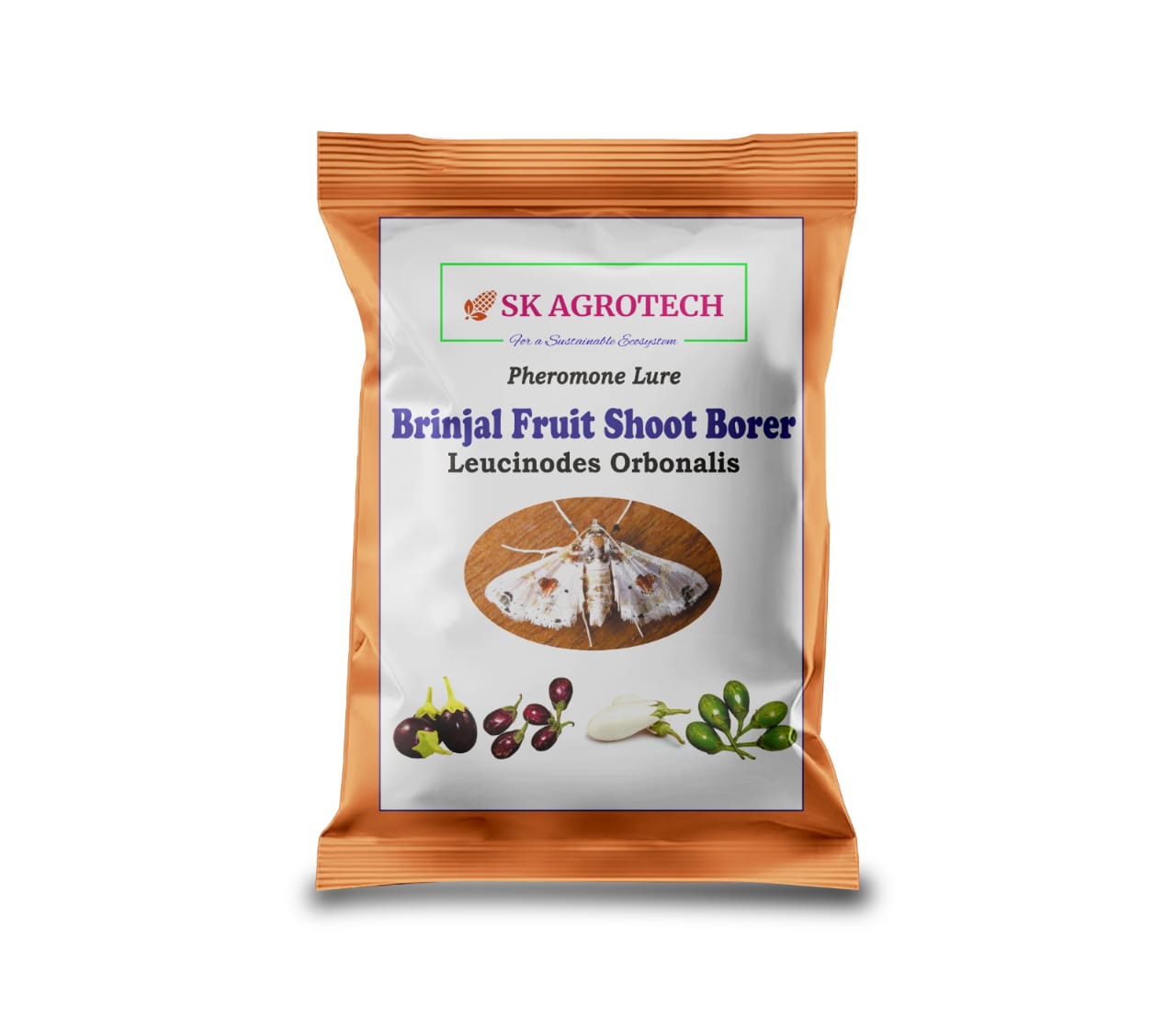



SK AGROTECH
Lure
Pheromone Traps and Lures for Catch insect /Moth of Leucinodes Orbonalis (Brinjal Fruit and Shoot Borer)
Brinjal fruit & shoot Borer Host crops: Brinjal Leucinodes orbitalis (Brinjal Fruit and Shoot Borer): Brinjal fruit and Shoot Borer (BFSB) is a very dangerous pest of brinjal. It not only reduces the yield by making holes in shoots as well as in fruits but also reduces the aesthetic value of the fruits so loss gets doubled. It is a monophagous pest that feeds only on Brinjal.
Normal control measures like spraying pesticides do not solve the problem instead making the environment polluted, ecological disturbance and vegetable poisoning.
Pest Identification: The adult is a greyish-brown moth with white wings. The fore and hind wings are provided with marginal hairs and bear pinkish-brown spots. The adult size is 20 mm across the spread wings.
Damage To Crop: Larva is an internal feeder, it immediately bore into the nearest tender shoot or flower, or fruit just after hatching.
Soon after boring into shoots or fruits, they plug the entrance hole with excreta. As a result, the affected twigs, flowers, and fruits dry up and may drop off. The presence of wilted shoots in an eggplant field is the surest sign of damage by this pest.
This reduces plant growth, which in turn, reduces fruit number and size. New shoots can arise but this delays crop maturity and the newly formed shoots are also subject to larval damage. Larval feeding in flowers results in failure to form fruit from damaged flowers.
Larval feeding inside the fruit results in the destruction of fruit tissue. The feeding tunnels are often clogged with frass. This makes even slightly damaged fruit unfit for marketing. The yield loss varies from season to season and from location to location.
Control Measures: The IPM strategy based on sex pheromone reduces pesticide abuse. The sex pheromone confuses the male adult from mating and thus prevents fertilized egg production by trapping a significant number of male moths, which results in a reduction of larval and adult population build–up.
Lcu-0 Lures: Set up Delta trap with LU-C Lure to monitor, attract and kill the male moths @ 12 nos./ha and change the vial once in 3 weeks.
Pheromone Lure Details:
• Dispenser - Vial
• Material - U V Stabilized Plastic polymer
• Packaging - Individually Sachet Packed
• Sachet Material - Foil Lined Laminate
• Field Life Of Pheromone lure - 45 days